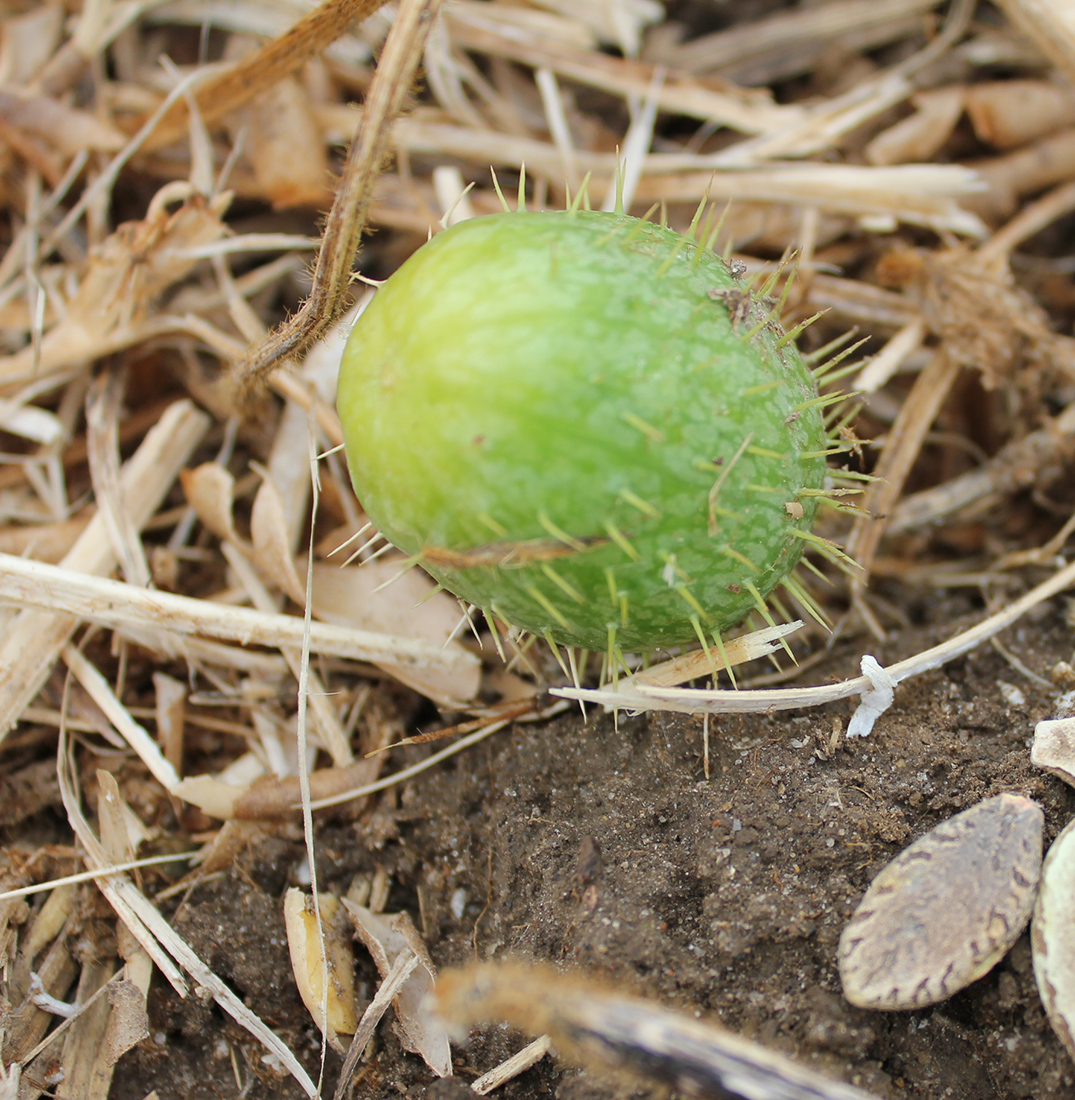Wild Cucumber
- Gourd or Melon (Cucurbitaceae family):
- Echinocystis lobata (Michx.) Torr. & A. Gray
- EPPO code:
- ECNLO
- Other names:
- Prickly cucumber, balsam apple
Species information
- Lifecycle:
- Annual.
- Propagation:
- Reproduces by seed. Explosive fruit projects seeds to a long distance.
- Emergence:
- Seed germinates in early spring.
- Habitat:
- Wild cucumber is found along creeks and field edges, particularly near woodlots. Recently, it has been creeping into cultivated crops, most likely aided by wild animals, such as wild turkey that eats the seed.
- Competitiveness:
- Little data exists on this species competitiveness; however, due to its vine-like nature, it does negatively affect harvesting efficiency when in field crops.
Identification clues
Seedling
- Cotyledons:
- Oblong, without a petiole, showing prominent veins, 35-45 mm long.
- Young leaves:
- Ovate, opposite orientation on the stem.
- Mature leaves:
- The mature leaves of wild cucumber are bright green and five-lobed, somehow star-shaped or roughly similar to a maple leaf. They have smooth or soft-toothed margins.
Mature plant
- Stems:
- Its stem is smooth. Using its tendrils that grow at each leaf node and opposite to the leaf, the stem creeps and climbs along objects.
- Flowers:
- Male flowers have small, white petals with prominent yellow anthers. Female flowers have yellow green petals on top of a spherical spiny ovary and grow immediately below each cluster of male flowers.
- Fruit:
- fleshy, oblong, 2.5–5 cm long, covered with soft spikes.
- Seeds:
- Wild cucumber’s seeds are oval or egg-shaped, and light brown with dark brown lines around the margins.
- Roots:
- Fibrous.
Often mistaken for
I know it's not Bur cucumber because wild cucumber has leaves that are more deeply lobed and “star-shaped” compared to the shallow lobed leaves of bur cucumber. Its stems are usually smooth, and its flowers have six rather than five petals and sepals.





Updated: January 13, 2023
Published: January 13, 2023